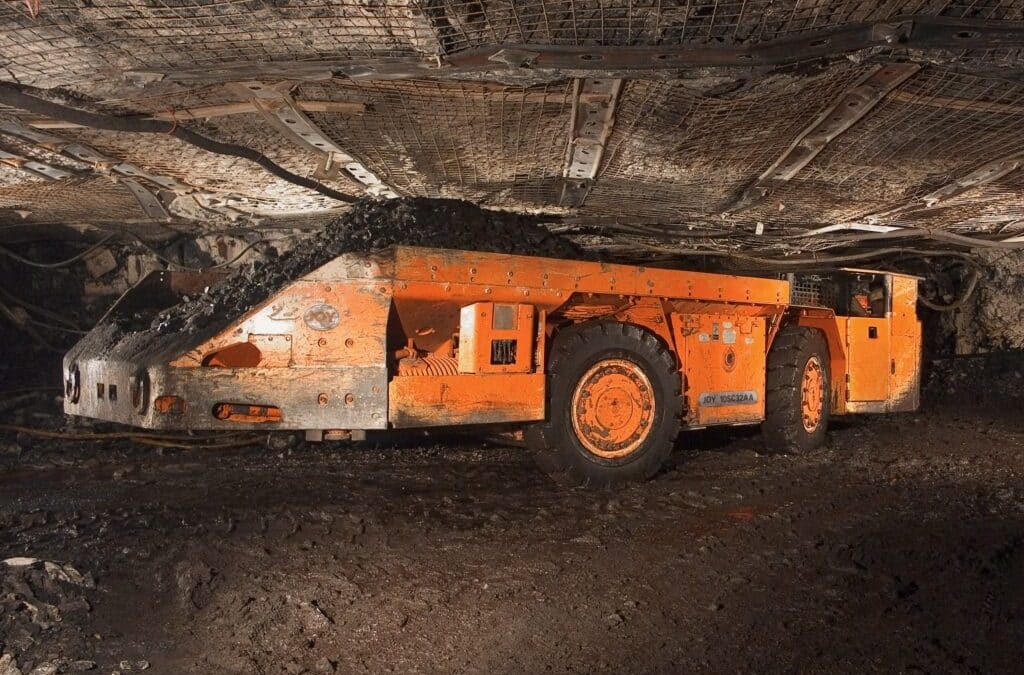Komatsu is installing third-party proximity detection systems across its underground mining equipment with the aim of reducing hazards faced by machinery operators.
Safety in underground mining has improved significantly in recent years, but hazards associated with workers interacting with mobile equipment still exist and continue to disproportionally contribute to severe injuries across the industry.
This was the case in 2021 at an underground coal mine in New South Wales. An investigation by the NSW Resources Regulator determined there were multiple factors that contributed to the incident, including a lack of effective communication and situational awareness, and that a proximity detection system (PDS) was not in use.
Regulators recommend PDS technology is fitted on underground mining equipment as it adds an important layer of engineered control that aims to lessen the risks for operators.
Following the publication of a report into the incident, Komatsu enhanced its position on the use of PDS technology in NSW coal mines, essentially adopting a similar approach to that of underground coal mining across Queensland.
“We had already been installing PDS technology on our shuttle cars, predominantly on the request of our Queensland based customers,” Komatsu’s business manager – mining and crushing – Australasia Matt Riley told Australian Mining.
Since December 2022, Komatsu has commenced engaging with NSW-based coal operators to integrate third-party PDS technology on its new or overhauled development machines.

“In essence, we have enhanced our approach towards the installation of PDS technology given the NSW Resources Regulator has endorsed its capability as a reasonably practicable safety control,” Riley said.
Influenced by a safety approach that includes a hierarchy of controls, with its emphasis on reducing risks in the workplace, Komatsu believes the role of PDS technology is useful in the promotion of safer work practices, in addition to traditional methods such as documented “no-go” zones.
“Komatsu has taken a stance to make PDS technology a default feature offered on all of our new machines and rebuilds in Australia,” Riley said.
PDS technology increases safety awareness and modifies worker behaviour, as it is an engineering control that effectively isolates operators from the hazard.
The hardwired interface of the PDS technology provides a series of inputs and outputs for development machines. In certain modes, for example when the park brakes are applied on the shuttle car, the PDS technology is not active, and personnel are allowed to enter either the ‘warning’ or ‘hazard’ zones as the machine is in a safe state for pedestrians to access.
The PDS technology only becomes active when the machine is entering a mobile state such as when the brakes are disengaged by the shuttle car operator.
“Komatsu doesn’t install its own proprietary PDS technology on development equipment – they are all third-party systems – so for PDS technology to work effectively there is a certain amount of mine infrastructure that is required, such as tags usually placed in cap lamps and carried by all personnel working underground,” Riley said.
“We’re undeniably committed to the implementation of PDS technology as a standard feature on all machines, but will work with the mine operators to ensure the best system is integrated for their organisation. .We are not aligned with any one system in particular”
All of Komatsu’s mining equipment is designed to work as a seamless system, providing maximum safety and productivity.

“Feedback Komatsu has received from current customers is that the installation of PDS technology changes behaviour – for instance, of shuttle car operators,” Riley said.
“When personnel move into a certain zone, near a shuttle car, the machine slows down, which in turn directly effects the efficiency of the machine’s driver, and in turn negatively impacts overall productivity.
“So, with PDS technology fitted, operators change their behaviour so as to not slow the machine down. This in turn keeps them safe from vehicle interactions.”
Komatsu has a long history of facilitating tailored solutions for its mining customers and has the ability to install third-party PDS technology, from multiple suppliers, across its Joy machinery range and other underground equipment.
“We want to ensure all our underground mining products offer the greatest level of safety, without compromising productivity, and we are willing to work closely alongside our customers to achieve this goal,” Riley said.



